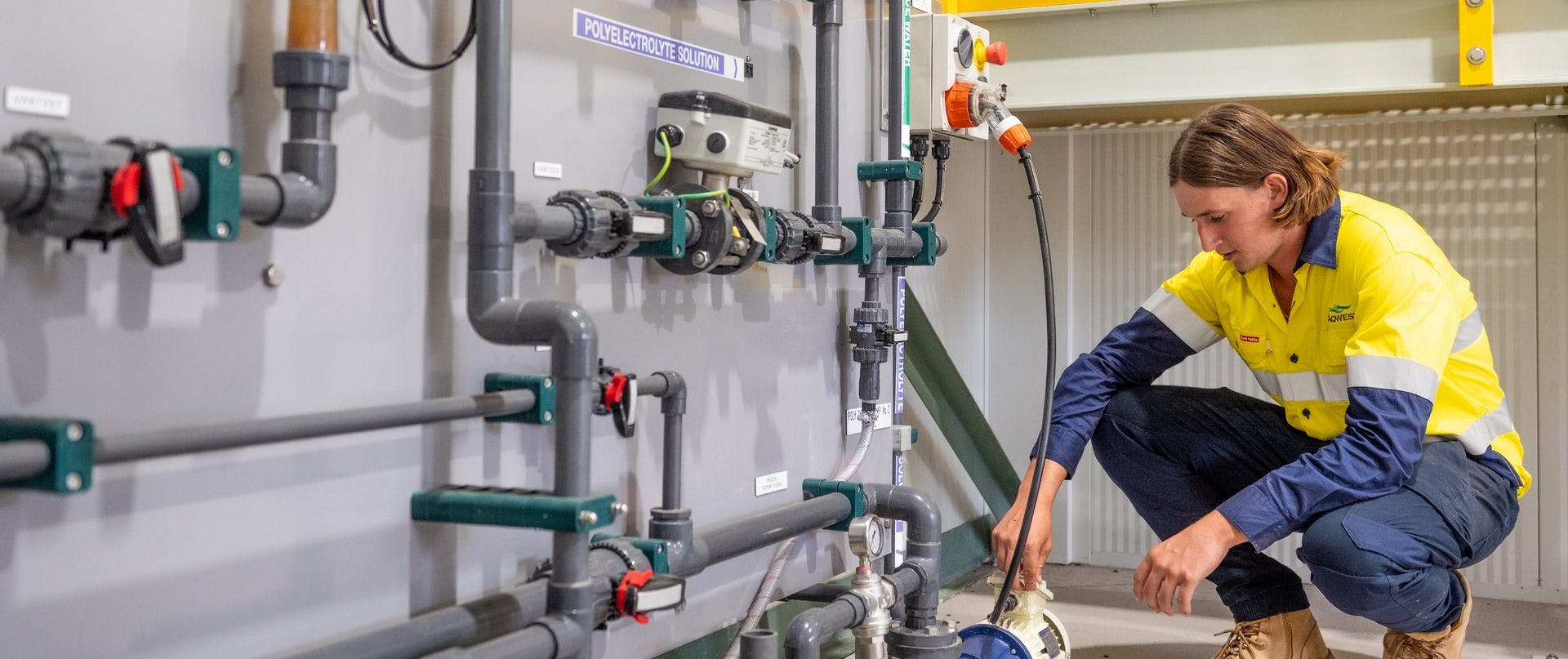
Information on backflow, backflow prevention and property owner's responsibilities for installing and maintaining backflow devices.
Aqwest is committed to supplying high quality water to its customers at all times. Protecting the system against backflow is a high priority.
Aqwest customers obtain high quality drinking water via an underground network of pipes. Water flows under pressure from treatment plants to properties throughout the city. In unusual circumstances, two events may occur simultaneously to cause changes to the quality of drinking water. These events are called cross-connection and backflow.
What is backflow?
Certain conditions, such as a burst pipe or use of a fire hydrant in the street, may cause the pressure to drop to a level which causes the water flow to go in reverse. This is known as backflow. There are two types of backflow: backpressure and backsiphonage.
Backpressure can be caused by a pump being inadvertently connected to the water supply. Backsiphonage may result from a burst main or when fire fighters access water from a hydrant, reducing pressure suddenly and causing water to flow the other way.
Cross-connection and backflow can cause a health threat. During a backflow situation, there is a threat that poisons can enter the water supply because of a cross-connection (e.g. chemicals, pesticide, bacteria, industrial waste). Poison can flow into your drinking water, or even into the city water supply. Contamination of drinking water can cause illness or, in extreme circumstances, death. To help prevent contamination of drinking water:
never immerse hoses in containers that are being filled;
never use running hoses to clear blocked drains; and
ensure cross-connection situations such as reticulation systems are protected with a backflow prevention device.
How is backflow prevented?
Domestic, commercial and industrial customers need to be aware of their responsibilities to prevent backflow. Properly designed and installed plumbing systems will ensure protection. You can improve protection by installing and maintaining backflow prevention devices.
Backflow prevention devices use one of the following to stop water flowing back into our pipes:
a valve that only allows water to go in one direction;
an air gap; or
a break tank.
What services require a backflow device?
The level of backflow prevention for each type of service is outlined in AS/NZS 3500.1.2.2021 National Plumbing & Drainage Code.
All backflow prevention devices shall be tested once every 12 months by a licensed plumber and compliance certificates sent to Aqwest.
Residential services
Standard 20mm and 25mm residential services have backflow prevention in the meter. All residential services with a diameter greater than 25mm shall require a level of backflow prevention. Residential properties with a home business may also require a level of backflow prevention, regardless of service size. Please consult a licensed plumber for advice.
Non-residential
All services shall require a level of backflow prevention.
Fire-fighting service
All services shall require a medium level of backflow prevention.
What are the property owner’s responsibilities for installing and maintaining backflow devices?
The property owner is responsible for ensuring that:
appropriate backflow prevention devices are installed and properly maintained;
devices are installed by a licensed backflow certified plumber;
an accredited backflow plumber tests backflow prevention devices when they are installed;
the plumber sends Aqwest a Certificate of Compliance when testable devices are installed;
once every 12 months, an accredited backflow plumber tests the backflow prevention devices and carries out all required maintenance. The plumber must send the test results to Aqwest within 5 business days of the test being conducted.
Please complete the Inspection and Maintenance Report for Backflow Prevention Devices form when registering a new backflow device, testing or replacing an existing device.
What are the property owner’s responsibilities for installing and maintaining backflow devices?
The property owner is responsible for ensuring that:
appropriate backflow prevention devices are installed and properly maintained;
devices are installed by a licensed backflow certified plumber;
an accredited backflow plumber tests backflow prevention devices when they are installed;
the plumber sends Aqwest a Certificate of Compliance when testable devices are installed;
once every 12 months, an accredited backflow plumber tests the backflow prevention devices and carries out all required maintenance. The plumber must send the test results to Aqwest within 5 business days of the test being conducted.
Please complete the Inspection and Maintenance Report for Backflow Prevention Devices form when registering a new backflow device, testing or replacing an existing device.

